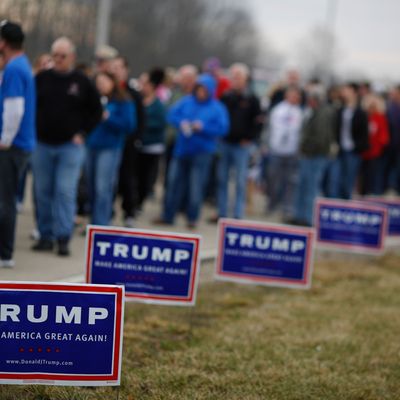
Areas where opioid use is disproportionately high were more likely to favor Donald Trump in the 2016 presidential election, a new study published this week finds.
Researchers from the University of Texas found that nearly 60 percent of the vote went to Trump in U.S. counties with an above average rate of opioid prescriptions in 2015. Counties with a below average rate of opioids, which include drugs such as OxyContin and Vicodin, saw about 39 percent of people vote for Trump. Published in JAMA Network Open, the study looked not at illicit opioid use, but at prescriptions administered to Medicare Part D enrollees.
The researchers caution that their study does not suggest that people who are addicted to opioids voted for Trump — “If you’re stoned out on opioids, you’re probably not voting,” lead author Dr. James Goodwin told the Dallas Morning News. Rather, they say, it indicates a connection between the economic and social problems that lead to high rates of opioid use and support for Trump.
The researchers focused their study on counties with an excess of people who’d received opioid prescriptions for 90 days or more. The areas with a higher-than-average rate of such people were largely concentrated in the South and Appalachia. They were also more likely to have high unemployment rates and lower median incomes than areas with a less-than-average number of chronic opioid users.
The study’s authors write that the resonance of Trump’s message in these economically depressed and highly medicated areas suggest that stemming opioid use will require more than a focus on the “medical model.”
“When you discuss the opioid epidemic, it is discussed in public health terms and the solutions tend to be public health solutions such as education, prevention, and treatment centers, which are critically important,” Goodwin told the website MedPage. “If there’s an implication of our study it’s that we have to broaden our discussion and understanding about some of the issues behind the opioid crisis.”





























